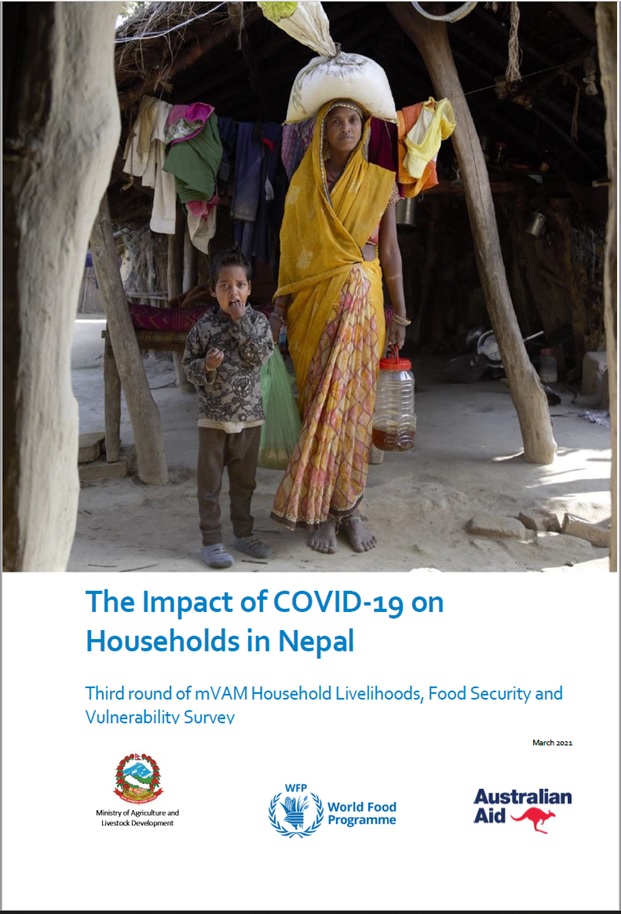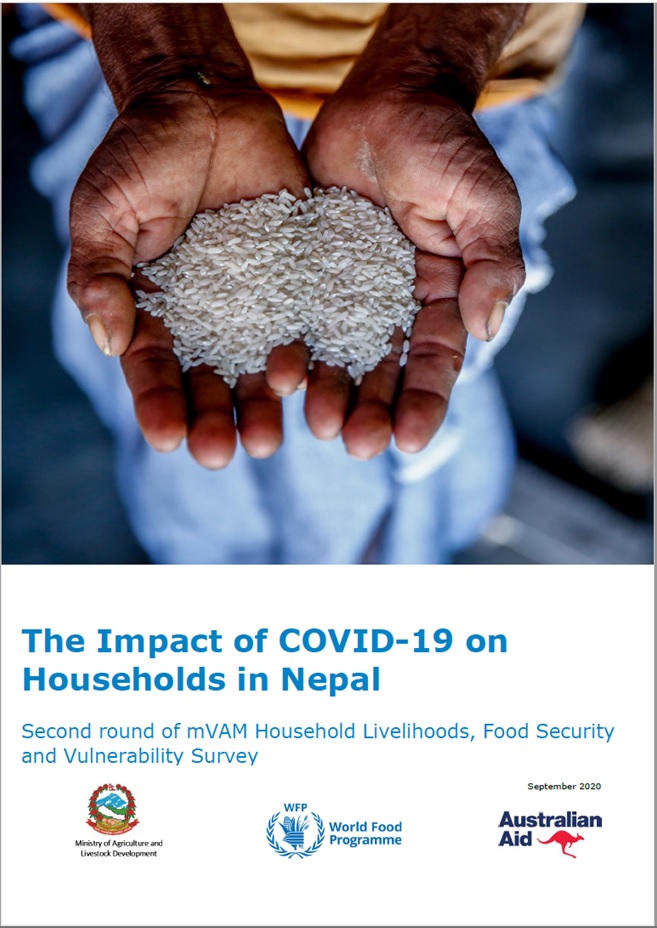Market and Price Impact Assessment Nepal
• Approximately 2.5 million people in rural Nepal are in immediate need of food assistance. These people are highly vulnerable to food price increases and already have very low food intake levels.
• An additional 3.9 million people in rural Nepal are at risk of becoming food insecure due to increasing food prices.
• In urban areas 525,000 vulnerable poor are at risk. The total of 67,000 people may require immediate emergency support. This is best done through providing targeted subsidized food programmes with limited duration or through a non-food based response. The remaining 458,000 people need to be carefully monitored in case further price increases have a broader impact.
• Nepal faces a serious risk of stagflation, a condition of low economic growth, high unemployment and rising prices. Rising food prices pose a severe risk to the peace process if not taken seriously by all involved.
• Highest increases in real prices during the past six months were observed for cooking oil (26 percent), coarse rice (19 percent) and kerosene (13 percent). This during a period when rice prices normally decline by about 11 percent.
• Traders in rural areas expect that the price of coarse rice and kerosene will increase by a further 11 percent and 8 percent respectively in the coming period. They expect that the price of cooking oil will increase less sharply at about 5 percent. Price rice expectations for urban areas are much higher for almost every commodity. Observed increases in wholesale prices, transportation costs and farm gate prices confirm the likelihood of further increase in retail prices.
• The Indian ban on food exports have pushed up prices of the restricted food items to some extent in Nepal; however, supply from India has not been greatly affected.
• Nepal is facing a serious fuel shortage. This heavily affects transportation costs which according to traders, is one of the most important factors in determining food prices. The average cost of transportation has increased by almost 27 percent and further increases are imminent.
• More than 60 percent of traders indicate that the supply situation for commodities and their sale volumes have deteriorated. Most of them consider that the situation will continue to worsen, but they are unable to indicate for how long. Average supply has decreased by 44 percent for kerosene, 30 percent for coarse rice and more than 20 percent for lentils, cooking oil and fine rice.
• There has been an upward pressure on daily wage rates for unskilled labour and wages have increased by 7 to 13 percent during the past six months. Percentage-wise, wage rates have increased the most in the Terai and Urban areas. Despite wage increases, the purchasing power for food of households decreased because of the rise in commodity prices.
• Due to the price rises, people have shifted their consumer behavior to buying smaller quantities and buying cheaper food items. Sales on credit have increased substantially.
• An inverse relationship between rising food prices and food intake can be observed for the extreme poor and poor wealth groups. This may result in higher malnutrition rates.
• Nepal is unlikely to overcome in the near future the challenges associated with increasing agricultural production, including, limited irrigation coverage, limited use of fertilizers and improved seed varieties, and increasing input costs.
News & Events
- Brief on the Food Security Situation in Nepal (Mid-July to mid-November 2017)
- Launch of Food Security Information System for Nepal
- Second Advance Estimate of 2016/17 Wheat Production in Nepal using CRAFT
- Brief on the food security situation in Nepal (Mid November 2016 to Mid March 2017)
- Updated NeKSAP guidance on food security response analysis and district food security monitoring

